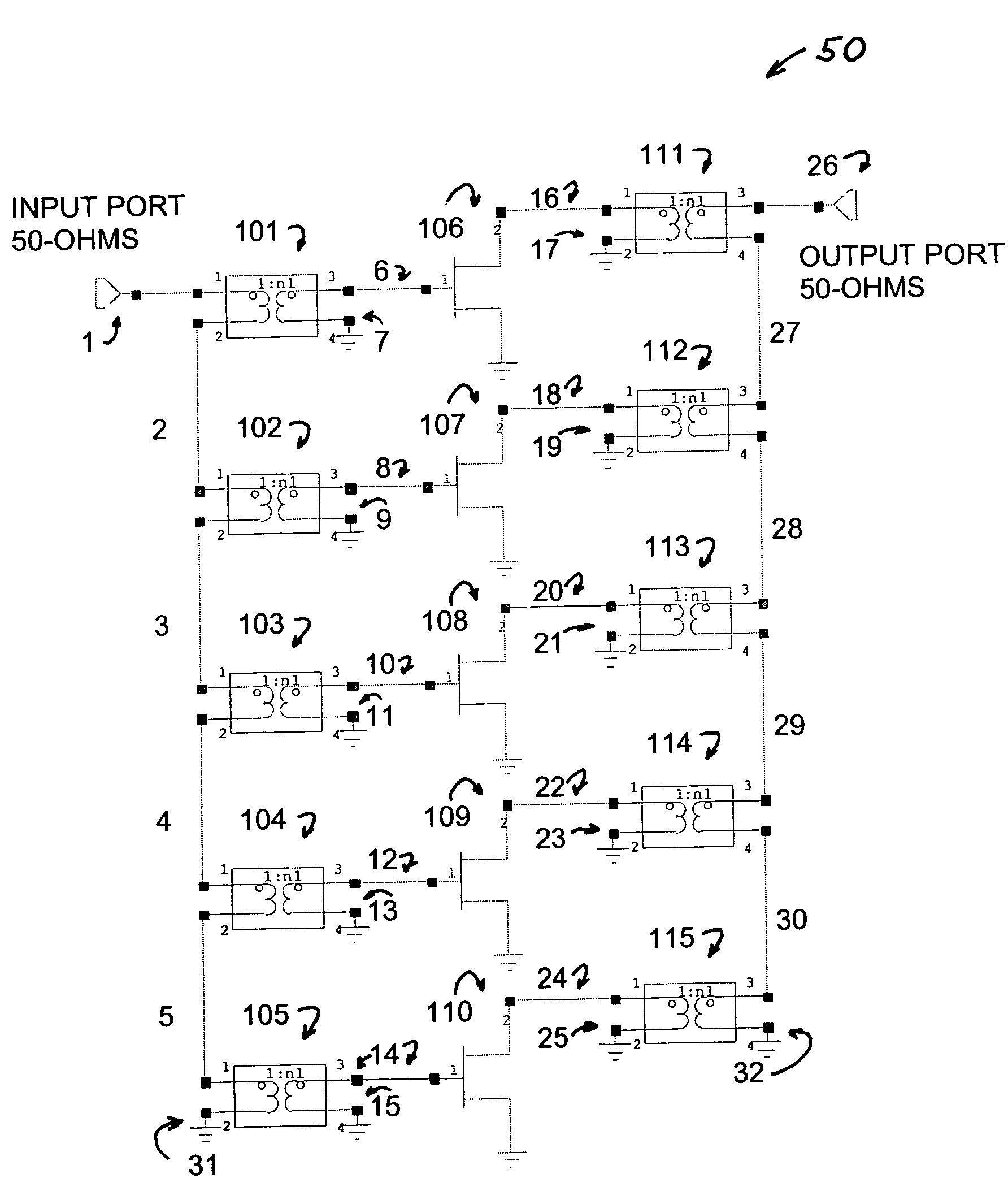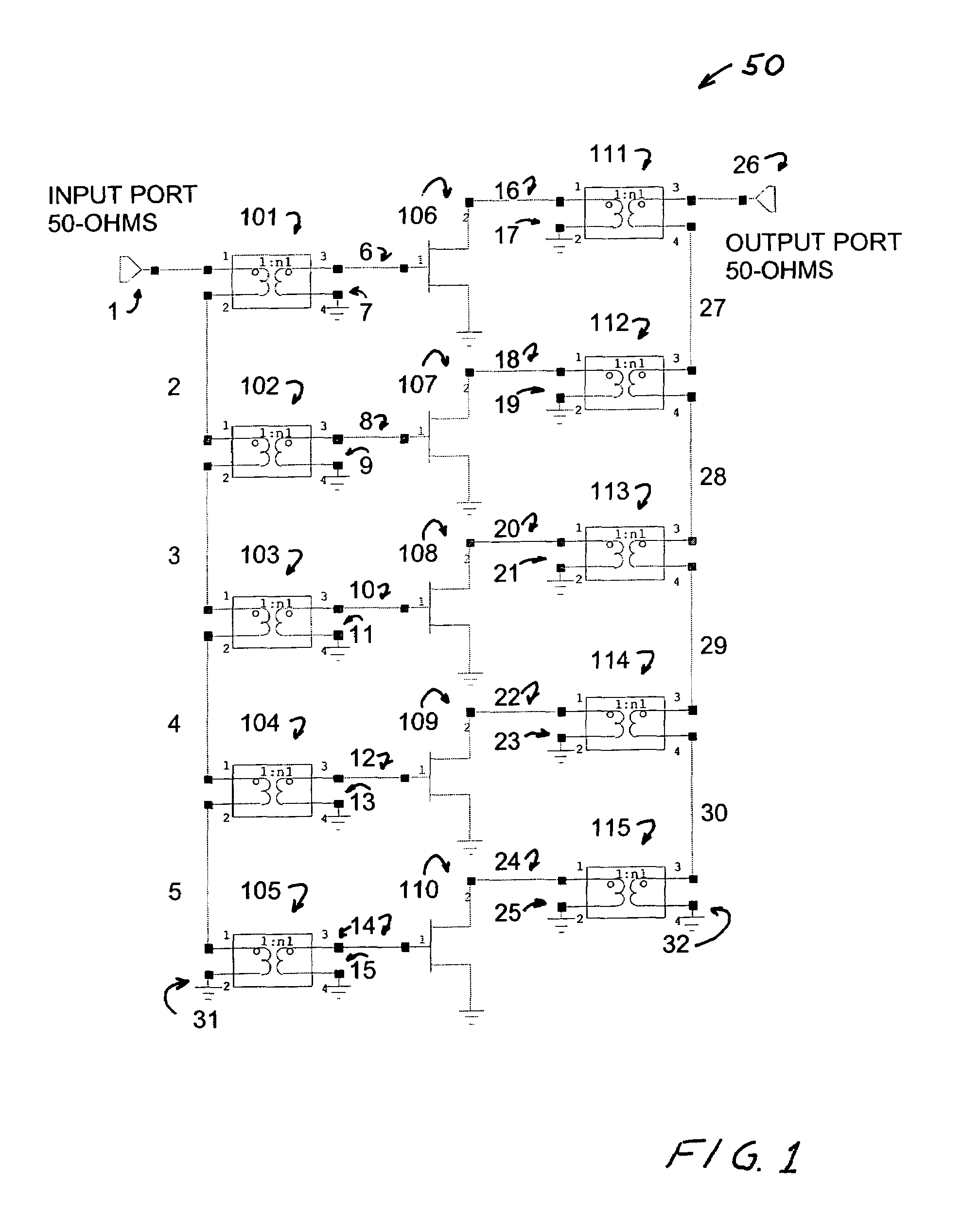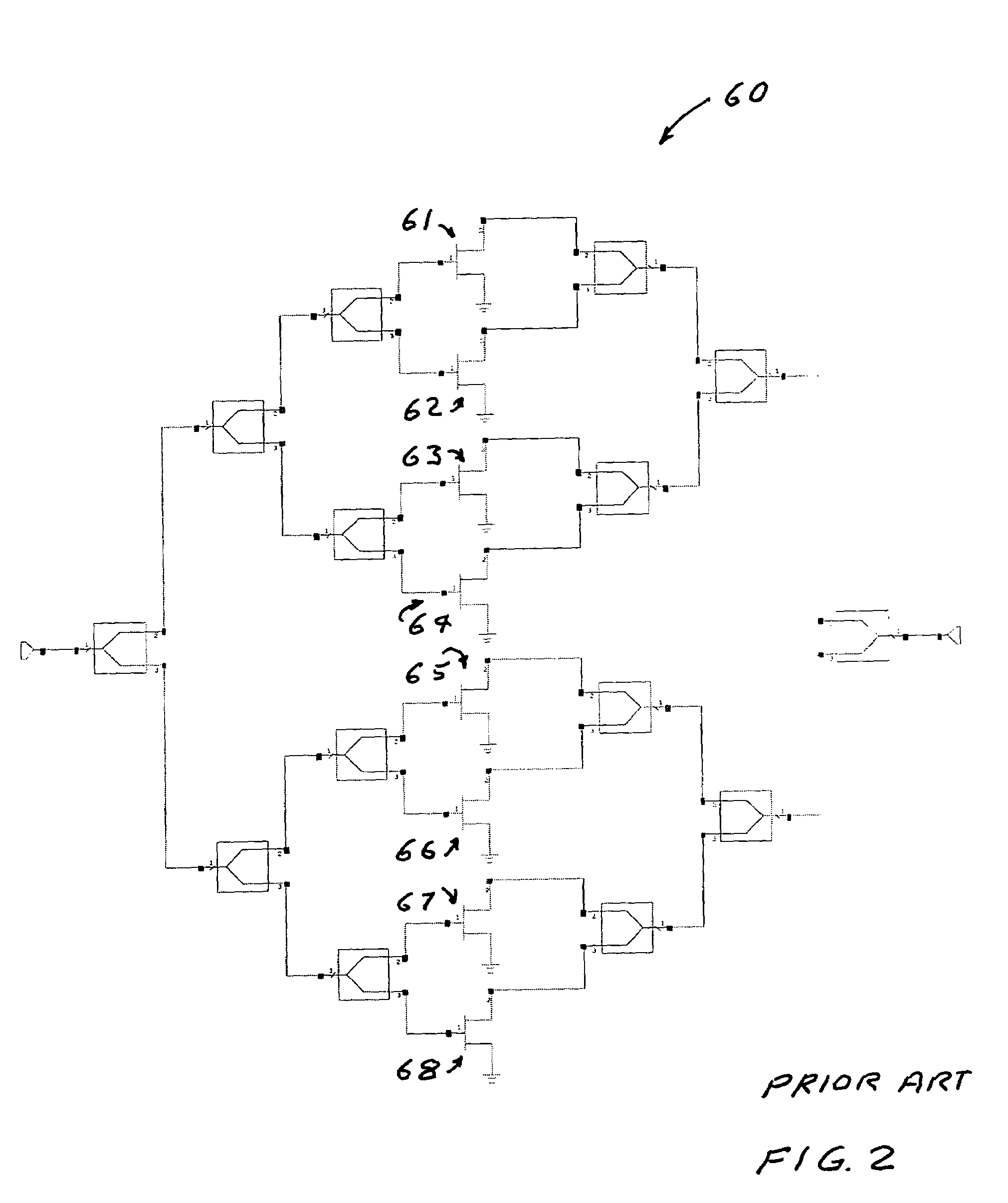Wide bandwidth, high power amplifier
a high-power amplifier and wide-band technology, applied in the field of radio frequency (rf) power amplifiers, can solve the problems of limited bandwidth of conventional power amplifier designs, inability to realize amplifier architectures, and inability to meet the requirements of amplifier architectures, etc., and achieve the effect of wide-band
- Summary
- Abstract
- Description
- Claims
- Application Information
AI Technical Summary
Benefits of technology
Problems solved by technology
Method used
Image
Examples
first preferred embodiment
[0029]A preferred embodiment of the present invention is shown in FIG. 1. This embodiment provides a high power solid-state amplifier over a wide bandwidth. It is comprised of a series connection of 1:1 transformers to address the issues associated with impedance matching and impedance transformation typical in an amplifier design.
[0030]This embodiment provides a 1.0 kW amplifier system 50 matched in impedance to a standard 50-Ohm input port 1 and a 50-Ohm output port 26. The architecture of amplifier unit 50 provides the desired amplification with the impedance needed to match the input and output ports utilizing the special design techniques of the present invention. Applicants for this purpose utilize five 200W amplifier modules 106, 107, 108, 109 and 110. Each of these modules is comprised of five 50 Watt transistors (Part Number MRF9060) supplied by Motorola. Four of the five transistors are connected in series to provide the 200 Watt capacity and one of the five transistors is...
PUM
 Login to View More
Login to View More Abstract
Description
Claims
Application Information
 Login to View More
Login to View More - R&D
- Intellectual Property
- Life Sciences
- Materials
- Tech Scout
- Unparalleled Data Quality
- Higher Quality Content
- 60% Fewer Hallucinations
Browse by: Latest US Patents, China's latest patents, Technical Efficacy Thesaurus, Application Domain, Technology Topic, Popular Technical Reports.
© 2025 PatSnap. All rights reserved.Legal|Privacy policy|Modern Slavery Act Transparency Statement|Sitemap|About US| Contact US: help@patsnap.com



